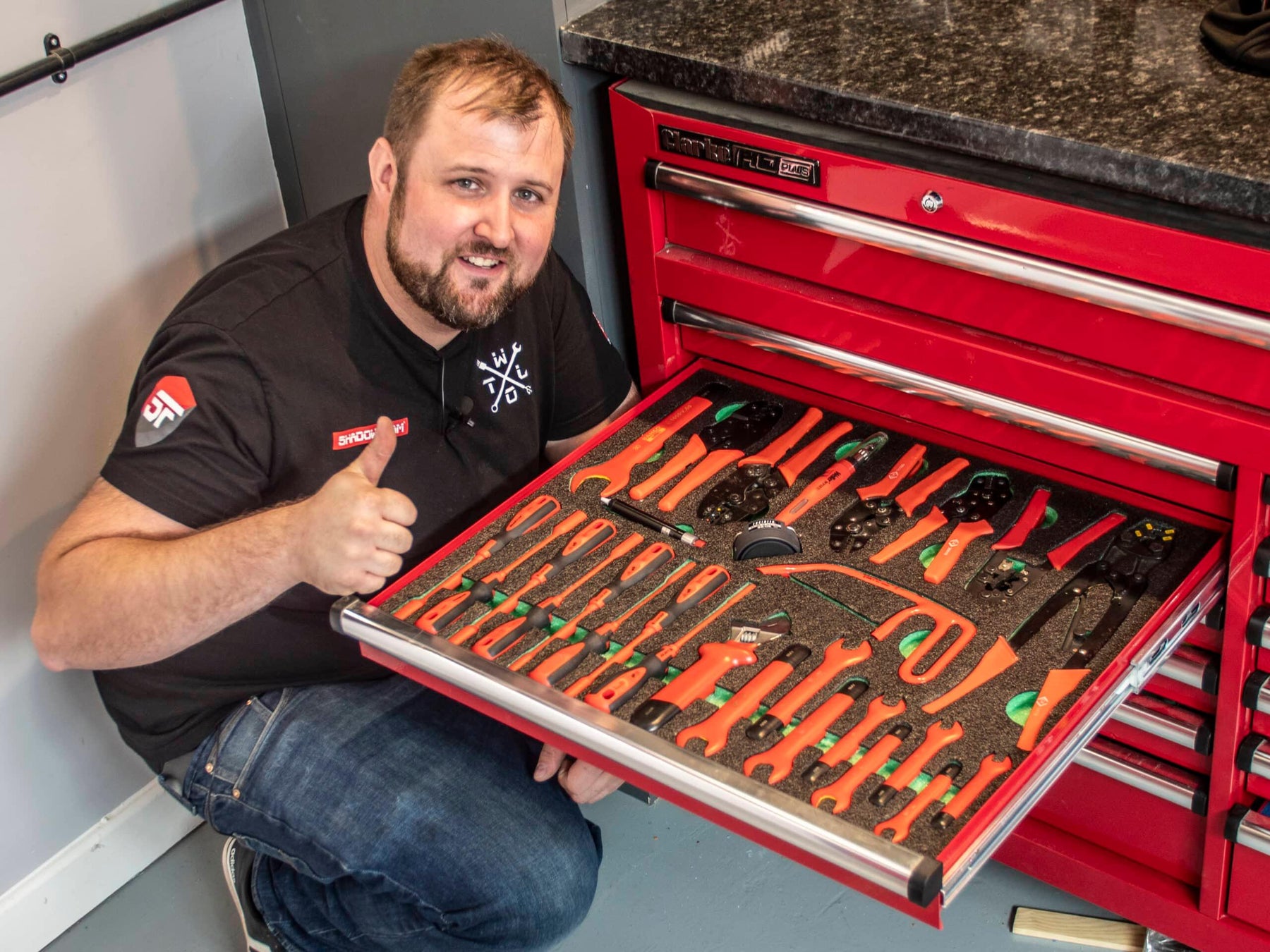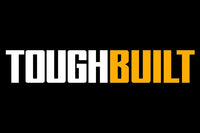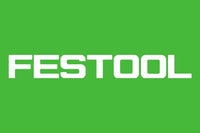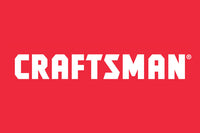Täglicher Bestellschluss um 14:00 Uhr

Wie man die perfekte Werkzeuglade bekommt
Wenn Sie wie wir eine Clarke-Werkzeugkiste oder eine Werkzeugkiste einer anderen Marke haben, ist dies für Sie. Dieser Leitfaden hilft Ihnen, eine perfekt organisierte Werkzeugschublade in kürzester Zeit zu erhalten. Dies wird wiederum Ihre Werkzeuge viele Jahre lang schützen und erhalten. Verlieren oder verlegen Sie nie wieder ein Werkzeug, indem Sie eine Werkzeugkontrolle auf Flugzeugniveau in Ihr eigenes Zuhause oder Ihre Werkstatt bringen. Zeit- und geldsparend… was gibt es da nicht zu lieben!? Und so wird es gemacht.
Unser Clarke Werkzeugschrank
Dieses riesige Werkzeuglager steht stolz in unserem Werkstatt-Studio. Unsere Werkzeuge werden häufig für die vielen Projekte verwendet, an denen wir arbeiten, daher ist es wichtig, sie gut organisiert zu haben.
Du wirst haben gesehen uns die Organisation unserer Clarke-Werkzeugschubladen vorher. Zuvor war die gesamte Werkzeugkiste mit unserem alten, jetzt discontinued grade of foam, Shadow Foam Original. Shadow Foam Original was great, but not really sustainable as a product hence replacing it. Also it was a lot softer than the new foam. Significantly, it wasn’t as durable or cleanable and the top colour could become grubby after a lot of use.
So, es ist alles bereit für das Upgrade, und das ist natürlich ein großes Projekt in einer Werkzeugkiste dieser Größe! Wir haben kürzlich die Schraubenschlüssel-Schubladen fertiggestellt, also machen wir heute mit unserem isolierten, elektrischen Set weiter.

Was kommt in die Schublade?
Wir haben eine ziemlich große Sammlung von CK Crimpwerkzeuge und eine isolierte Handsäge. Auch ein Gaslötkolben und ein Lötabsauger sowie ein Ständer, einige austauschbare Spitzen und eine Tube Lötzinn und ein kleiner Schraubenschlüssel. Wir haben außerdem ein vollständiges Set von Bacho isolierte Schraubenschlüssel, and our GearWrench isolierte Schraubenschlüssel.
Das ist eine Menge Ausrüstung, die in nur eine Schublade passt. Aber wenn Sie Jonathans besten Tipp befolgen, Ihre Werkzeuge schnauze-an-schwanz zu positionieren, können Sie etwa 30 % mehr Platz sparen, im Vergleich dazu, sie einfach gleichmäßig nebeneinander aufzustellen.

Wie es gemacht wird
Wir erinnern die Leute immer an dasselbe. Bitte tragen Sie immer schnittfeste Handschuhe, wenn Sie mit Shadow Foam und den scharfen Klingen arbeiten, die Sie zum Schneiden benötigen. Wenn Sie keine haben, liefern wir sie in unserem Schneidekits, und sie sind wirklich wichtig.
Unser empfohlenes Werkzeug zum Schneiden des Schaums ist ein Skalpell. Diese sind ebenfalls in unseren Schneidekits erhältlich, falls Sie noch keins haben. Und wir empfehlen immer, Ihr Wissen über die besten Techniken zum Schneiden und Abziehen über die Anleitungen in der Wie man Abschnitt unserer Website. Wir haben auch ein nützliches Leitfaden zum Shadowfoaming. Dies enthält einige der besten Hinweise und Tipps sowie die am häufigsten gestellten Fragen, die wir antreffen.
Eine Sache, die wir hier etwas anders gemacht haben, ist ein praktischer Trick, um zu wissen, wann der Platz knapp ist. Wir haben einen versteckten Raum geschaffen, in dem die Gaslötkolbenartikel untergebracht werden können. Was wir hier gemacht haben, ist, um den Gaslötkolben selbst herumzuschneiden, damit er schön im Raum sitzt, und ihn dann zu entfernen. Jetzt werden wir darunter die zusätzlichen Artikel einfügen. Die Lötpaste und der kleine Schraubenschlüssel. Sie können jetzt ordentlich versteckt unter dem Lötkolben selbst sitzen.
Die abschließenden Details
Mit diesem Projekt, nachdem wir alle Werkzeuge in den Schaum geschnitten hatten, wollten wir auch Fingerzüge hinzufügen, um das Herausnehmen zu erleichtern. Die beiden Haupttechniken, die wir dafür verwenden, sind entweder mit einer geraden Kante. Dafür verwenden wir unser Shadow Foam Lineal. Oder einen Kreis, und dafür verwenden wir unser Shadow Foam Schablonensatz. Bei diesem Projekt hat uns der Kontrast zwischen dem Green Schaumstoff und den Red Werkzeugen wirklich gefallen. Aber schau dir das an, was denkst du?




















 Kostenloses Schneideset bei qualifizierten Bestellungen
Kostenloses Schneideset bei qualifizierten Bestellungen
 Über 4.000 positive Bewertungen
Über 4.000 positive Bewertungen
 Mehr als 500 Videos auf YouTube
Mehr als 500 Videos auf YouTube
 Unterstützung in Großbritannien
Unterstützung in Großbritannien